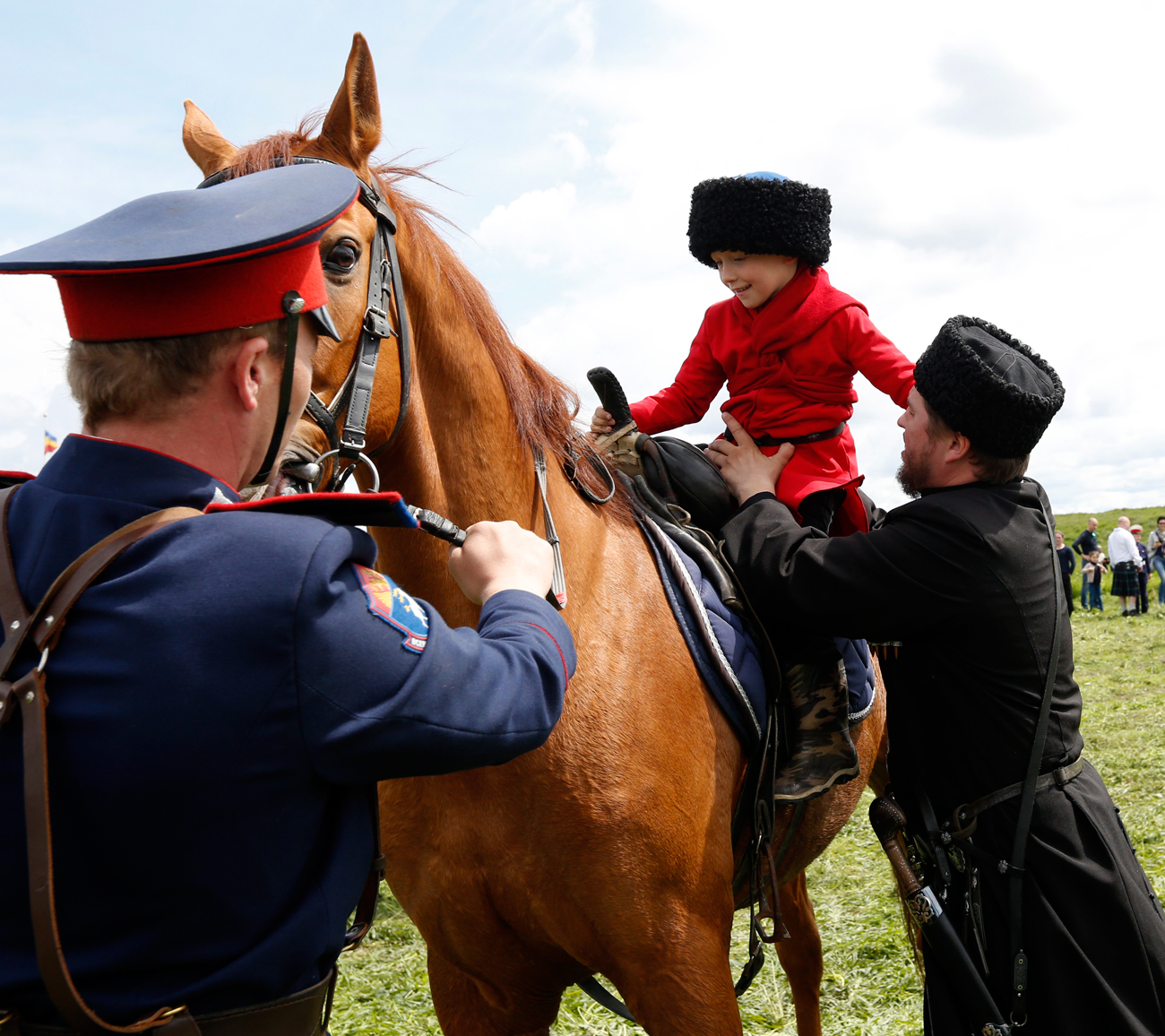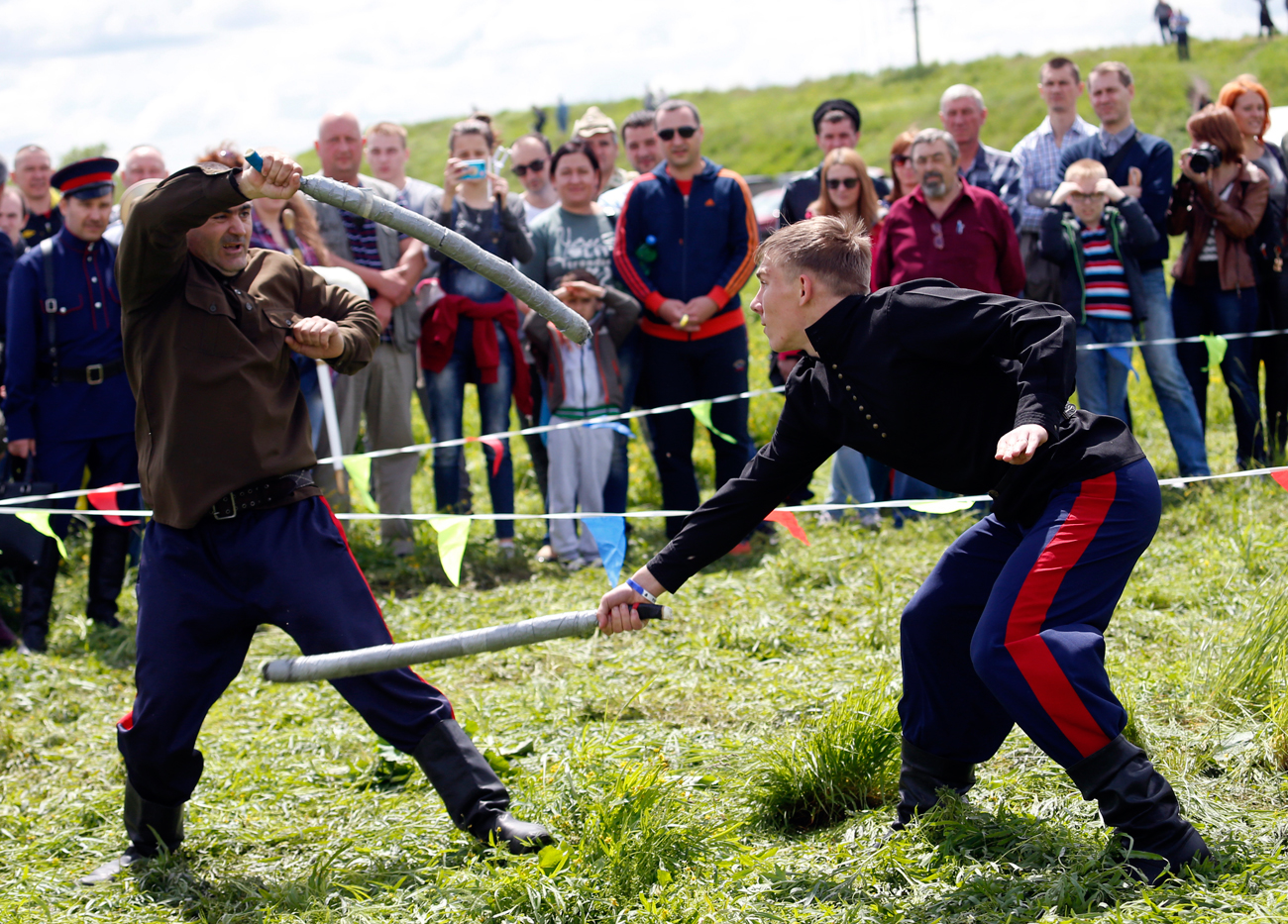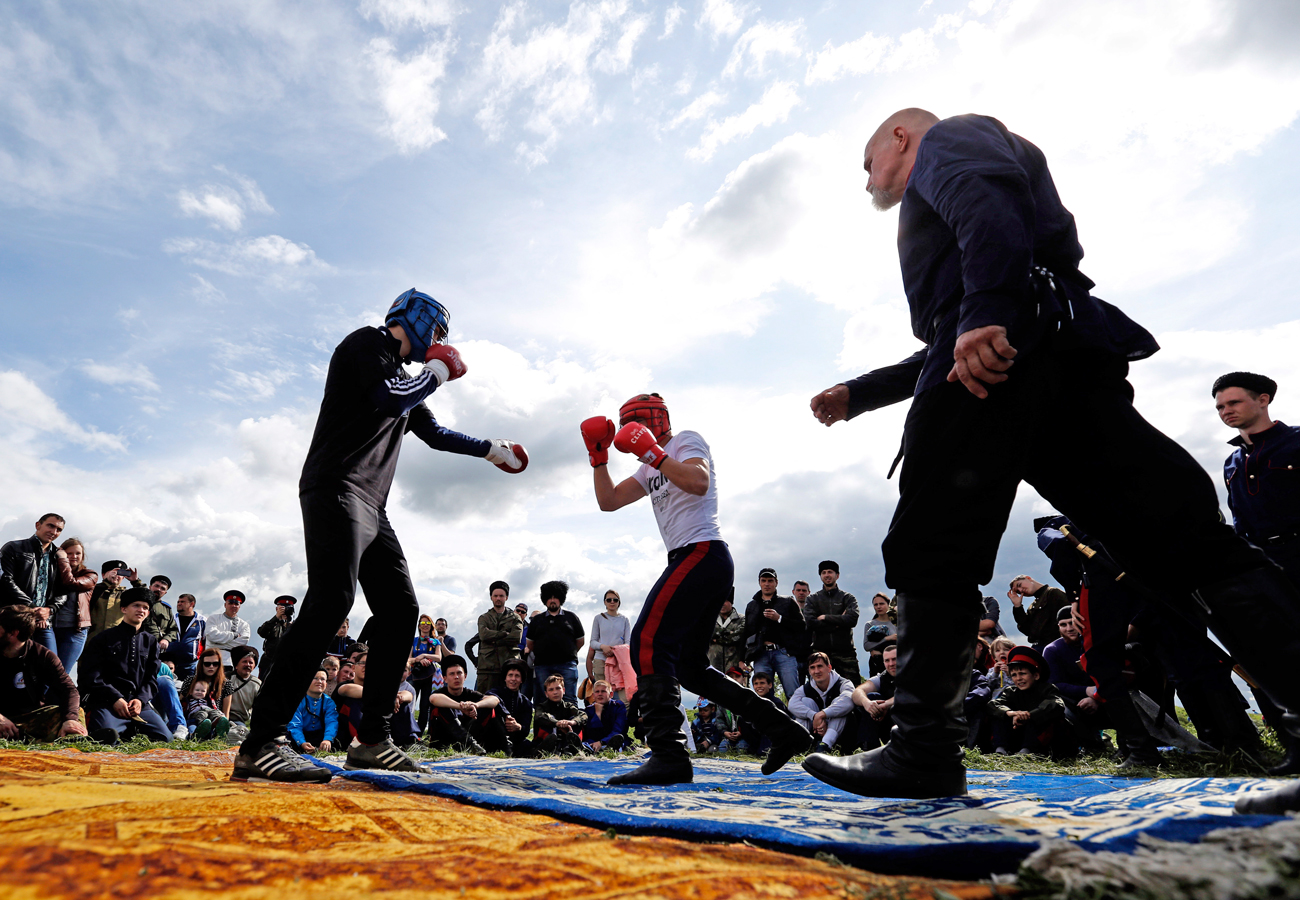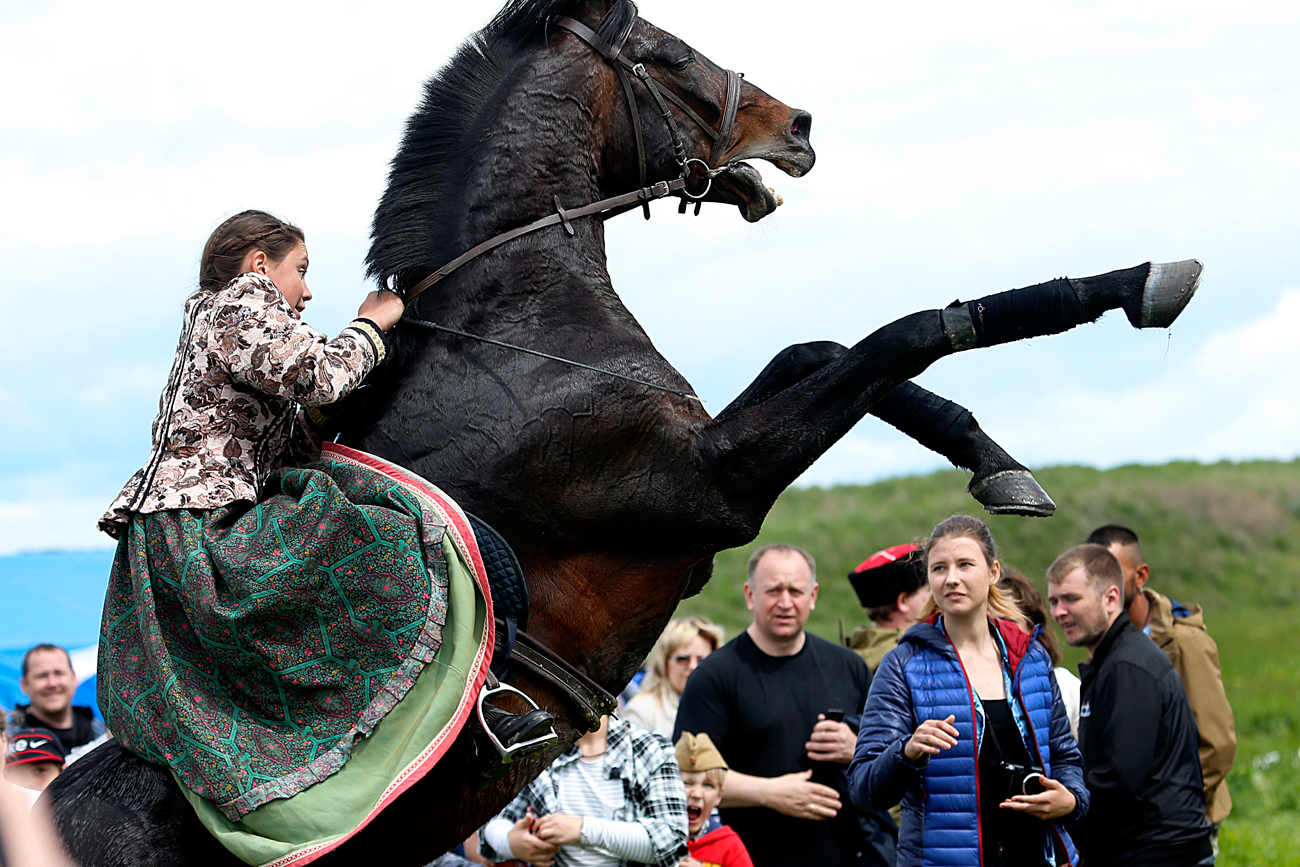
The children who find themselves in the saddle for the first time are symbolically incorporated into the Cossack community. Photo: A young Cossack is seated on a horse.
Valery Matytsin/TASSMany have heard of the valor and courage of the Russian Cossacks – the daring and freedom-loving riders from the Kuban and Don steppes in southern Russia. From the 18th century to the Bolshevik Revolution, they were particularly appreciated in the tsarist army for their courage and excellent military training.
From the earliest times, the Cossacks honed their combat skills at the Shermitsii, a festival centered on "exemplary" or show fights. The modern army no longer needs help from the Cossack horsemen, but these show traditions are carefully preserved.
The Shermitsii is a series of "exemplary" or show fights, which are staged by the Cossacks and timed with the holidays. The largest ones, for example, take place on Maslenitsa (Pancake Week) and Trinity Sunday.
The Cossacks have always been experts with bladed weapons, so the main event at Shermitsii is fencing – with sabers and spears. Of course, the contestants do not aim at cutting or stabbing the opponent, so the saber is held with the cutting edge facing backwards, while the spear's edge is replaced with a soft tip. In training and games, sticks are used instead of weapons.
Another popular entertainment is cutting targets on foot. The participant's task is to complete an obstacle course on foot or on horseback, hitting targets as they move. You earn a certain amount of points for a fixed period, so you need to complete the course as quickly as possible.
Besides fencing and hitting targets, there is no way the Shermitsii could take place without hand-to-hand combat. The two most common variants of the fight are in the circle and on the carpet. In the former case, fighters need to push their opponent out of the circle and keep him there for a few seconds. In the latter, they need to put their opponent on the mat and not allow him to get back on his feet for a short period of time.
After the spectacular fights with sabers and fists, it is already difficult to surprise the viewer. But then comes the turn of the race – perhaps the most exciting part of the Shermitsii. It's a real show: The Cossacks dress up in their traditional costumes, gallop on horses, shoot, joust with spears and perform complex acrobatic routines.
 Source: Valery Matytsin/TASS
Source: Valery Matytsin/TASS
 Source: Valery Matytsin/TASS
Source: Valery Matytsin/TASS
The Cossack Shermitsii festival is held annually. Since 2010, it has been the national sport of the Rostov Region, so the banks of the Don River are unquestionably the place to go for the strongest impressions.
One of the most famous Shermitsii festivals is held in May in Starocherkassk (670 miles south of Moscow), in the St. Anna fortress, and is open to everyone, though just as spectators – only Cossacks are allowed to participate. According to an old tradition, entire families come to the Shermitsii beneath their family banners – families of several generations get together.
The Cossacks are austere people, so the winners are not entitled to any financial awards. However, it cannot be said that the most dashing competitors are left completely empty-handed. For example, at the most recent Shermitsii in May 2016, the winner of the horseback archery competition was awarded a full set of handmade mounted archery gear. For a real Cossack, this is perhaps even more valuable than money.
 Source: Valery Matytsin/TASS
Source: Valery Matytsin/TASS
 Source: Valery Matytsin/TASS
Source: Valery Matytsin/TASS
At the Shermitsii, be sure to observe the children's initiation rite for entrance into the ranks of the Cossacks. The continuity of generations is sacred for these knights of the steppe.
Upon the completion of the competition, young Cossacks aged between three and 10 are solemnly seated on a horse. The children who find themselves in the saddle for the first time are symbolically incorporated into the Cossack community – a touching moment.
All rights reserved by Rossiyskaya Gazeta.
Subscribe
to our newsletter!
Get the week's best stories straight to your inbox